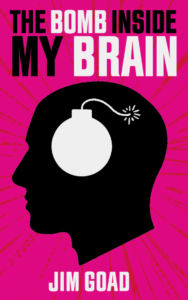The Bum Who Became a Speedbump
Right before the stroke of midnight on Friday, January 12, a young, homeless Hispanic man named Francisco Garcia attempted to cross San Fernando Road in a dilapidated and unincorporated sector of Los Angeles County called Pacoima. It would be the last street he ever tried to cross.
Garcia was first knocked to the ground by a light-colored pickup truck traveling the wrong way in the northbound lanes. The driver did not stop.
Audio version: To listen in a player, use the one below or click here. To download the mp3, right-click here and choose “save link as” or “save target as.”
As Garcia squirmed around on the street like a bug that’s only been half-crushed to death, another vehicle, an SUV that was also traveling the wrong way on the northbound lanes, hit him with such force that it knocked him into the southbound lanes. That driver didn’t stop, either.
Within seconds, another SUV — the only one of the three vehicles that was traveling in the right direction — ran over him. Yet again, the driver kept on driving. By the time paramedics arrived, Garcia was already dead.
“It’s so hard, just to know the fact that they just left him there, and he was trying to get up from the floor,” Garcia’s sister Norma told a TV reporter. The fact that she called it “the floor” rather than “the street” suggests that English may not be her first language. Norma said that her brother was homeless, mentally unstable, and had drug problems.
According to the Governors Highway Safety Association, “drivers struck and killed at least 7,508 people walking in 2022.” The National Highway Traffic Safety Administration says that in 2020, 2,564 pedestrians died in hit-and-run incidents — or about seven every day. Pooling those stats, one could assume that in one of every three deaths where a car killed a pedestrian, the driver fled the scene.
But three drivers in a row hitting the same pedestrian without stopping is an act of savage indifference in triplicate. It’s the grimmest thing I’ve seen all year. Then again, the year is still new. Last summer, I wrote about a 27-year-old Hispanic girl who was sleeping in a public park when a riding mower gobbled her up and spat her out in pieces, but that involved only one driver. This involves three.

You can buy Jim Goad’s The Bomb Inside My Brain here.
There are no good guys in this story. It’s hard to feel too sorry for someone who doesn’t look both ways when they’re illegally crossing a street anywhere in LA County.
About ten million people call LA County home, and an estimated million or so are illegal immigrants. LA County’s population, one of America’s most “diverse,” exceeds that of 40 US states. I called LA home for seven years, and it was the most alienating, anomie-addled place I’ve ever lived. As is the case with Florida, one gets the sense that no one is from LA and everyone fled from somewhere else to get there, giving it a rootless and hollow speed-freak energy you don’t find in some of the country’s staider settlements.
Pacoima (puh-KOY-muh) is one of way too many places in the United States that are “America, but not really.” It is a skid-marked afterthought in LA County’s massive sprawl. Homeless camps perched right next to elementary schools are so stuffed with trash, garbage flows into the streets when it rains. “Unhoused” people wander onto private property and lurch at homeowners with hatchets. It’s where two homeless men can get “gunned down” a mile apart from one another over the same weekend. Redditors describe Pacoima as “a place with a lot of gang activity” where people “raise chickens and roosters in their backyard,” the “streets are dirty, smelly, parks are dangerous, and [there are] house parties every night,” but “as long as you can speak a couple sentences in Spanish, you’re fine.”
I asked a woman I know who lives in the San Fernando Valley about Pacoima, and she wrote back:
Very Mexican & El Salvadoreña & definitely illegal. Not many normal chain brands there, like no Starbucks but brands specifically for immigrants. Tons of street vendors selling food illegally on the street. I have seen them be a front for drug dealers. . . . So Pacoima is a dump basically, full of illegals, signs for birth control & other government signs everywhere, zero care about what their community or homes look like. It is no wonder no one cares there when you get hit & run over but plenty of MoneyGram places to send remittances home. . . . San Fernando Road is two roads that run along the train tracks & it is full of industrial stuff, car-parts places, recycling, etc., with liquor stores on corners & not much else. . . . All the industrial areas are now the campground for homeless people who live in RVs. If that guy was out at 11:45 [PM] walking, he was probably up to no good. . . . I do wonder if this guy was a victim of homeless justice. They live on the streets in tents & beat-up RVs, they have a street captain or boss who runs the street they live on, and they have to pay a tithe or some kind of protection for living there; I do wonder if this guy stole someone’s drugs or something. . . . Sad, but he probably got hit by illegals who fear getting sent back home. It is so common here; some of them will even get out, pull the dying person off the hood of their car, throw them on the ground, & keep driving.
In terms of blunt indifference to human life, the hit-and-run fatality that most reminds me of Francisco Garcia’s triple-thumping is the 2002 murder of Gregory Glenn Biggs, a homeless white man in Fort Worth who was struck by a Chevy Cavalier driven by Chante Jawan Mallard; with that name, identifying her as a “black woman” would be redundant. The force of impact shoved Biggs’s head right through Mallard’s windshield. Accounts differ on how long it took Biggs to bleed to death — some say 12 hours, others say two to three days — but he died inside Mallard’s garage, his head still stuck in the windshield. As he was dying, Mallard would visit him in the garage and apologize, but she did nothing to help him. After Biggs died, Mallard and some friends dumped his corpse in a public park and set fire to part of her car in a botched attempt to conceal evidence. Several months after the gruesome incident, Mallard reportedly laughed while telling friends at a party about how she’d hit “this white man” with her Chevy. She was convicted of murder and sentenced to 50 years in prison.
But that story got national coverage over 20 years ago in an America that didn’t seem like such a terminal case. These days, the US is the world’s only developed country where life expectancy is declining. Suicide rates are peaking. Per-capita opioid deaths are now higher than vodka deaths after the Soviet Union crumbled. American society has reached a state of “hypernormalization,” a term a Berkeley professor coined to describe the late-stage Soviet Empire, where everyone knew things were falling apart and no one had an answer, so they closed their eyes and pretended the slow-motion horror show represented business as usual. Even something as ghastly as three successive drivers treating a human body like an annoying speedbump doesn’t get much press coverage because . . . well . . . that sort of thing is the new normal.




